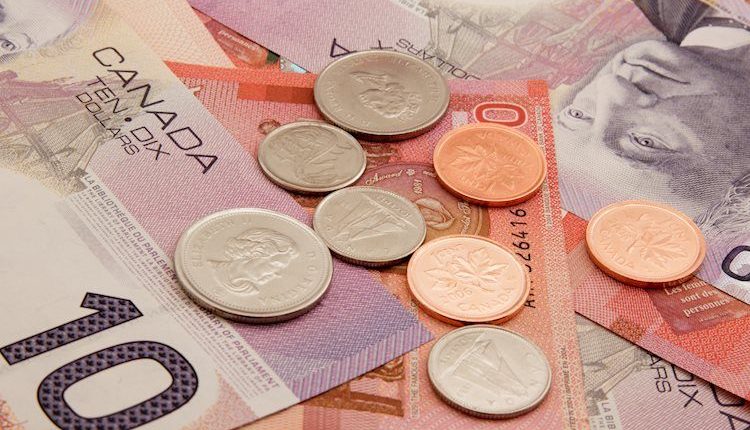- The Canadian Dollar is falling back for the second day in a row as markets shy away from risk.
- BoC sees a period of negative growth over the horizon.
- Despite a weakening economy, BoC is hampered on policy by increasing inflation risks.
- USD/CAD reaches seven-month high on Wednesday.
The Canadian Dollar (CAD) is down once again on Wednesday, adding to yesterday’s declines and sending the USD/CAD back into the 1.2800 handle as the Bank of Canada (BoC) holds rates steady as markets broadly expected.
The Bank of Canada (BoC) held its main reference rate at 5.0% Wednesday morning like Wall Street broadly predicted, but dovish comments from BoC Governor Tiff Macklem are failing to spark much confidence in the Loonie.
The BoC is expecting “two or three quarters” of negative growth as a recession looms over the Canadian economy, with Governor Macklem specifically noting that odds of achieving a soft landing are beginning to decrease.
Broad-market risk aversion is the name of the game as Tuesday’s risk-off flows continue for a second day, sending the US Dollar (USD) higher. Crude Oil prices, however, are finding a floor for Wednesday, helping to limit losses for the oil-backed CAD.
Daily Digest Market Movers: Canadian Dollar knocking back as investors favor Dollar Index, BoC fails to inspire
- BoC to maintain policy rates for the time being, period of negative growth expected.
- BoC Governor Macklem warns that too much government spending will not help curtail inflation.
- The gap is closing on achieving a soft landing, according to BoC.
- Despite risks, BoC doesn’t see a “deep recession” yet.
- Crude Oil prices are strung in the middle, helping to backstop the Loonie slide.
- Middle East geopolitical tensions keeping barrels well-bid, despite a surprise build-up of US Crude Oil reserves.
- Energy Information Administration (EIA) barrel counts recorded an unexpected 1.371M rebound in US oil stocks.
- The USD/CAD is set to spend the rest of the week reacting to US economic data. Gross Domestic Product (GDP) and Personal Consumption Expenditure (PCE) figures are still on the cards for Thursday and Friday, respectively.
- Tiff Macklem speaks on policy outlook after BoC leaves policy rate unchanged at 5%
Technical Analysis: USD/CAD teases 1.3810, pinned to the high side for Wednesday
The Canadian Dollar (CAD) is extending the week’s risk-off backslide as traders return toward the US Dollar (USD), with the BoC’s showing briefly sending the USD/CAD into 1.3810 on reaction.
The Loonie-Dollar pairing is treading water just beneath the 1.3800 handle, and Tuesday’s topside push extends yesterday’s rebound from the 200-hour Simple Moving Average (SMA). USD/CAD has hit a fresh seven-month high.
On the daily candlesticks, USD/CAD continues to push higher, bolstered by a rising 50-day SMA pushing into 1.3600 on the chart paper. The floor on any bearish corrections is priced in from the 200-day SMA near 1.3475.
The immediate ceiling on a bullish continuation sits at early March’s peak of 1.3861, and a break of this level would set a new high for the year on the USD/CAD as the Loonie waffles.
Bank of Canada FAQs
The Bank of Canada (BoC), based in Ottawa, is the institution that sets interest rates and manages monetary policy for Canada. It does so at eight scheduled meetings a year and ad hoc emergency meetings that are held as required. The BoC primary mandate is to maintain price stability, which means keeping inflation at between 1-3%. Its main tool for achieving this is by raising or lowering interest rates. Relatively high interest rates will usually result in a stronger Canadian Dollar (CAD) and vice versa. Other tools used include quantitative easing and tightening.
In extreme situations, the Bank of Canada can enact a policy tool called Quantitative Easing. QE is the process by which the BoC prints Canadian Dollars for the purpose of buying assets – usually government or corporate bonds – from financial institutions. QE usually results in a weaker CAD. QE is a last resort when simply lowering interest rates is unlikely to achieve the objective of price stability. The Bank of Canada used the measure during the Great Financial Crisis of 2009-11 when credit froze after banks lost faith in each other’s ability to repay debts.
Quantitative tightening (QT) is the reverse of QE. It is undertaken after QE when an economic recovery is underway and inflation starts rising. Whilst in QE the Bank of Canada purchases government and corporate bonds from financial institutions to provide them with liquidity, in QT the BoC stops buying more assets, and stops reinvesting the principal maturing on the bonds it already holds. It is usually positive (or bullish) for the Canadian Dollar.
Read the full article here

